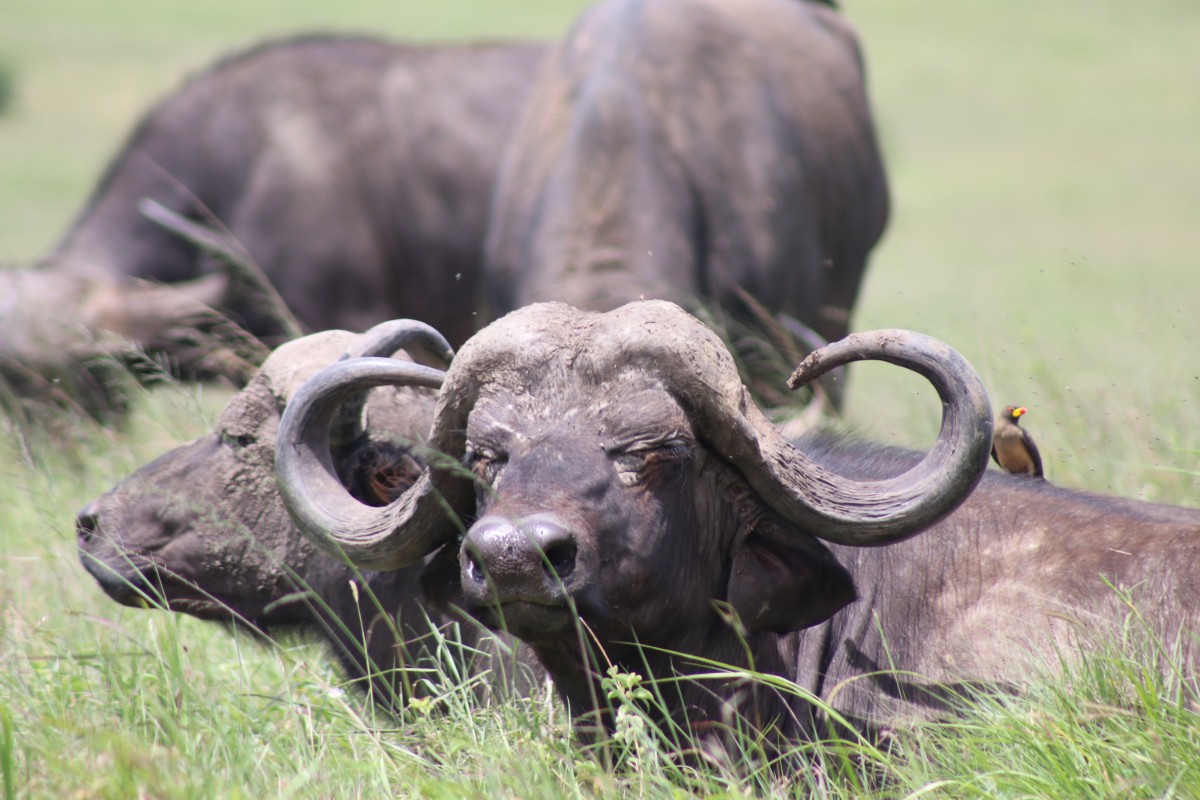Wildlife diseases are a growing concern worldwide. In addition to threatening populations of wild animals themselves, wildlife disease can affect domestic animals and human health. This is particularly true nowadays, when emerging diseases shared by both animals and humans increasingly come to our attention in the new context of globalisation of movement of commodities and climate change. Furthermore, the legal and illegal trade in wildlife, a market that is estimated to be worth a minimum of 6 billion US dollars, is growing rapidly and also contributes to the global dissemination of new pathogens and emerging diseases.
Therefore, a better understanding of diseases present in wildlife and their effects on wildlife, domestic animals and humans is of key importance to develop control measures.
Zoonoses – diseases of animals that can infect humans – are a growing concern. Approximately 60% of existing human pathogens and over 75% of those that have appeared during the past two decades can be traced back to animals. Many of them have a proven link with wildlife. Furthermore, new factors such as increasingly mobile human populations, climate change, the movement of animals and animal products via international trade, deforestation, urbanisation, and new social habits such as the increasingly common adoption of exotic pets, all favour the unprecedented multiplication of contacts between wildlife, domestic animals and humans.
The role played by wildlife in the world epidemiological situation is widely demonstrated. We also know that animals in the wild are both targets of and a reservoir for pathogens capable of infecting domestic animals and humans. Infections with tuberculosis, Nipah virus or Ebola virus, to name but a few, regularly afflict domestic animals and humans alike, and each of these events sounds a shrill alarm on the need for better monitoring of wild animal health and the source of wildlife diseases. For instance, large primates have on occasions seen their wild populations decline due to diseases of human origin. More recently, the avian influenza global crisis has clearly demonstrated how much still remains to be understood regarding the behaviour of the H5N1 strain in wild birds as well as their role in the spread of the disease.
So-called invasive wild and domestic animal species or non-indigenous plants threaten many ecosystems, for example by introducing alien species into some ecological niches, with growing negative environmental consequences worldwide. When natural ecosystems are threatened by invasive wild animal populations or by domestic animal populations that have become wild or semi-wild, it is important to control the demography of such populations which can also serve as highly effective disease reservoirs for numerous pathogens. In this respect, the OIE is seeking to develop standards for the humane control of these undesirable categories of animal populations where necessary.
In parallel with the increased human population and the huge rise in world demand for animal protein – which is bound to grow in the coming years –, significant increases in domestic animal populations with the attendant requirement for grazing land have caused pastoral activities to impinge on areas inhabited by wild animals in nearly all parts of the world. This creates a new threat to the survival of wildlife in a decreasing habitat as well as challenging domestic animals with new disease agents.
The management and control of disease in wildlife present many challenges. Symptoms and signs of disease in wildlife are not as readily observed as in domestic animals, and specimens for laboratory analysis are more difficult to collect, thus making early detection of and response to disease outbreaks slow to implement. All these factors combine to make surveillance of wildlife diseases worldwide more problematic but, they certainly do not lessen the importance of surveillance programmes.
The OIE established a permanent Working Group on Wildlife Diseases in 1993. The Working Group comprises six of the world’s leading scientific experts in their subject areas coming from all regions of the world. It collects analyses and disseminates information on almost 40 diseases affecting wildlife, whether in the wild or in captivity. The Working Group has prepared OIE recommendations and overseen numerous scientific publications on the surveillance and control of the most important wildlife diseases.
Surveillance of wildlife diseases must be considered equally as important as surveillance and control of diseases in domestic animals. Wild animals often act as sentinels for animal diseases, thus allowing an effective management and control of these diseases in domestic animals. Therefore, the OIE strongly encourages its 172 Members to put efficient monitoring systems in place and notify outbreaks of diseases in wild, feral or partially domesticated animals, as is the practice for all other animals. Today, thanks to the OIE’s world-wide animal health notification system (WAHIS), the reporting of animal diseases in the world, including those of wildlife listed by the OIE, has dramatically improved and has brought an unprecedented level of transparency.
All national Delegates of OIE Members have been required to nominate a national ‘focal point’, an official who, under the Delegate’s authority, will inform the OIE of the presence of notifiable diseases affecting wildlife and will submit comments on proposed new OIE standards in the field of wildlife diseases
Bernard Vallat
Furthermore, the OIE has created the concept of compartmentalisation in order to continue to protect the status of freedom, in respect of certain animal diseases, of domestic animal populations living in an environment that is affected by these specific diseases. In some cases, the concept of compartmentalisation makes it possible to raise domestic animals in areas where wildlife may be infected (e.g. by Newcastle disease in wild birds or swine fever in wild boar) and still take part in international trade.
Dr Bernard Vallat, OIE Director General. Picture (c) DAHP (MoA) 2008
At the same time, it can protect wild animals from some domestic animal diseases, thanks to the biosecurity measures implemented within the compartments.
There is clearly a duty to manage wildlife diseases. We must maintain biological diversity, improve our knowledge of the health status of all animal populations and prevent species at risk from disappearing, while protecting human and domestic animal populations from the introduction of diseases. This relies mainly on the Veterinary Services. A technically competent, adequately resourced Veterinary Service is needed, working with other regulatory authorities and with non governmental organisations (NGOs) in a cooperative constructive manner. This also requires political will and the dedication of the necessary resources for the implementation of programmes and scientific research. Furthermore, the efficiency of Veterinary Services in this field will be increased by various mechanisms of alliances and collaboration with agencies in charge of wildlife protection and hunting policies, and with NGOs working on the same topics. Alliances with hunters’ organisations are very useful and important for the surveillance and early detection of wildlife diseases. These alliances are also useful for managing undesirable animal populations.
There have already been notable successes. Some diseases, such as rabies, have been controlled or eliminated in many areas thanks to oral vaccination programmes – in foxes, for example –, thereby also protecting domestic animals and human health. Rinderpest is on the verge of being eliminated from domestic and wild animals. Trichinellosis, while still significant in wild carnivores, has been controlled in domestic pigs in most of the world, considerably reducing the incidence of the disease in humans and partially in wildlife.
Wildlife disease problems will not solve themselves. While it is important to monitor the presence of pathogens in wildlife, it is not, and will not be, in wildlife that interventions are mainly directed. Control and eradication measures implemented under the authority of the Veterinary Services must primarily focus on domestic animal populations and this will contribute to the protection of wildlife.
The OIE calls on the international community as a whole to support national Veterinary Services in order to strengthen their surveillance capacities for diseases in wildlife, particularly in order to monitor closely what has the potential to become a threat to domestic animals and even humans. The OIE will also continue to speak out in favour of safeguarding natural ecosystems together with the relevant wild animal species that have survived the various planetary upheavals, because they are global public good.
For all the above reasons, the surveillance of wild animal diseases, the sanitary control of international trade of domestic and wild animals and animal products using OIE standards recognised by the World Trade Organization, as well as the control of inappropriate transfer of invasive species and undesirable animals or plants, are essential actions.
Bernard Vallat ![]()
September 2008 Editorial

